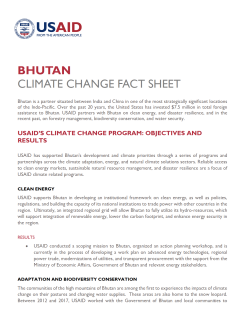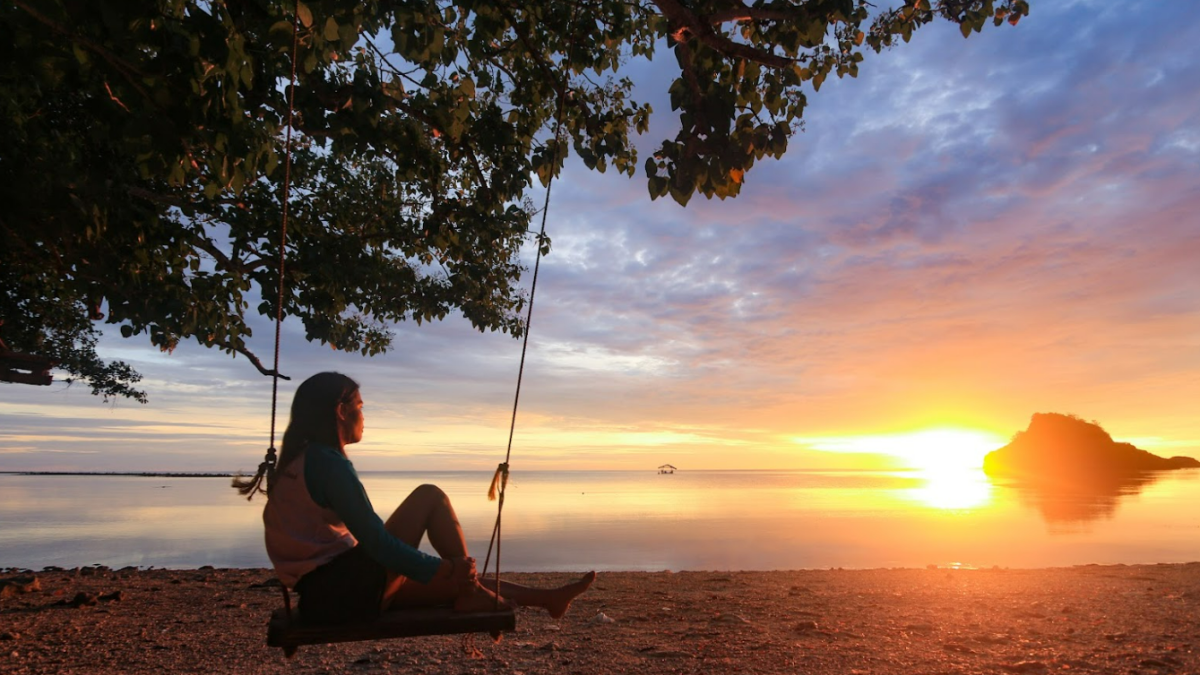Bhutan is a partner situated between India and China in one of the most strategically significant locations of the Indo-Pacific. Over the past 20 years, the United States has invested $7.5 million in total foreign assistance to Bhutan. USAID partners with Bhutan on clean energy, and disaster resilience, and in the recent past, on forestry management, biodiversity conservation, and water security.
USAID’s Climate Change Program: Objectives and Results
USAID has supported Bhutan's development and climate priorities through a series of programs and partnerships across the climate adaptation, energy, and natural climate solutions sectors. Reliable access to clean energy markets, sustainable natural resource management, and disaster resilience are a focus of USAID climate related programs.
Clean Energy
USAID supports Bhutan in developing an institutional framework on clean energy, as well as policies, regulations, and building the capacity of its national institutions to trade power with other countries in the region. Ultimately, an integrated regional grid will allow Bhutan to fully utilize its hydro-resources, which will support integration of renewable energy, lower the carbon footprint, and enhance energy security in the region.
Results
USAID conducted a scoping mission to Bhutan, organized an action planning workshop, and is currently in the process of developing a work plan on advanced energy technologies, regional power trade, modernizations of utilities, and transparent procurement with the support from the Ministry of Economic Affairs, Government of Bhutan and relevant energy stakeholders.
Adaptation and Biodiversity Conservation
The communities of the high mountains of Bhutan are among the first to experience the impacts of climate change on their pastures and changing water supplies. These areas are also home to the snow leopard. Between 2012 and 2017, USAID worked with the Government of Bhutan and local communities to conserve high mountain landscapes for multiple benefits: adaptation to climate change; protection of the snow leopard and protecting the headwaters of rivers and water supply.
Results
USAID and the World Wildlife Fund worked with Bhutanese government organizations (2012- 2017) to design and implement a comprehensive set of climate adaptation and conservation activities, which contributed to overall conservation efforts and helped establish Bhutan's first high altitude automatic weather station network, prepared two climate-smart watershed management plans, contributed to improved management of the 491,400 hectares of Bhutan’s forests.
Disaster Resilience
Populations throughout the South Asia region, including Bhutan, face a range of natural hazards, including cyclones, droughts, earthquakes, floods, and landslides. USAID's Bureau for Humanitarian Assistance, in partnership with the Asian Disaster Preparedness Center and the National Society for Earthquake Technology (NSET), support regional programs to promote disaster preparedness through professional development activities for emergency responders across South Asia, including Bhutan.
Adaptation: Water Security
Approximately one third of the world’s population depends to some degree on the availability of fresh water within the High Mountain Asia region and planning for future changes is a high priority. However, realistic estimates of the future availability and vulnerability of water resources in this region were limited. Between 2011 and 2018, USAID helped to assess snow and glacier contribution to water resources across the mountain ranges of Central Asia and the Himalaya-Karakoram-Hindu Kush, including in Bhutan.
Results
USAID provided the equipment and training for Bhutan’s first water chemistry laboratory. It will assist Bhutan in monitoring the quantity and quality of its water supply.




